- No products in the cart.
How To Make Money With Your Cricut- All Your Questions Answered
This guide will help you navigate the world of Cricut crafting, from finding the right platforms to sell your creations, tips on pricing, resources for design files, and a list of popular products that are in demand. Whether you’re just starting or looking to grow your Cricut business, you’ll find everything you need to succeed!
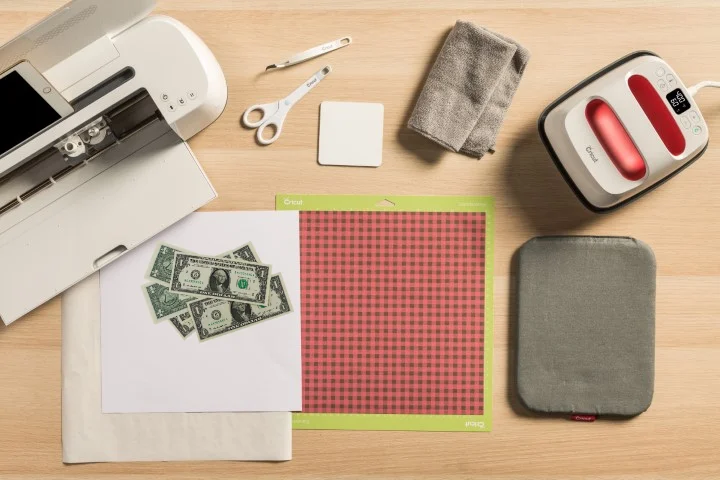
One of my very favorite subjects to talk about is Cricut. I have many friends and readers who have seen my Cricut projects and often come to me with their questions. I love talking about Cricut and am always happy to answer anything!
One of the most frequent questions I get is, Can I make money with my Cricut? Today, I’m giving you the full 411 on everything you need to know about turning your Cricut creations into a profitable business
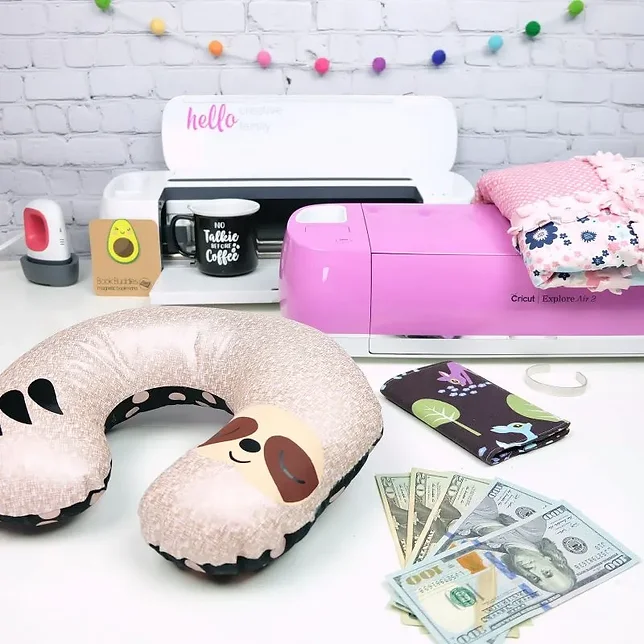
There are many reasons why people want to make money using their Cricut!
It’s an incredibly fun hobby that people love doing all the time. Some want to recoup the investment from their Cricut machine, while others see items at craft fairs and think, “I could do that!”
For some, it’s about supplementing household income, and for others, the goal is to earn a full-time income doing what they love. No matter your motivation, turning your Cricut passion into profit is achievable!
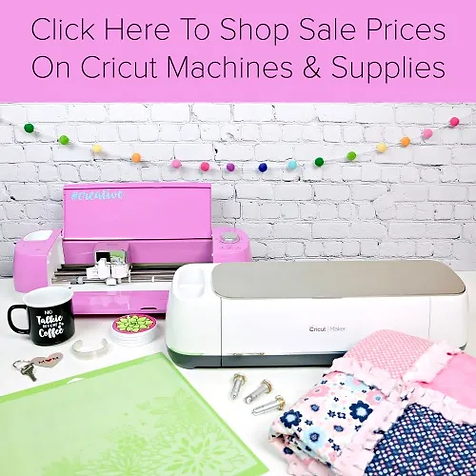
Question1: Can I make money using my Cricut?
The short answer to “Can I make money using my Cricut?” is ABSOLUTELY! However, before diving in, there are some important questions to ask yourself to ensure you start your Cricut business off on the right foot.
Question 1: How long have you been using a Cricut?
Many people start dreaming of profits before even unboxing their Cricut. While it’s great to set goals, it’s essential to take a few months to truly familiarize yourself with your machine, perfect your technique, and figure out what you enjoy making most. Experiment with different materials, learn the proper methods, and ensure your projects are durable and high-quality.
I’ve been using Cricut machines for six years, and looking back, I’m amazed at how much I’ve grown! Some of my first creations make me cringe now. Remember, your business is only as strong as the products you sell, so test your creations on yourself, family, and friends before selling to the public.
For more tips on **how, where, and what to sell**, keep reading!
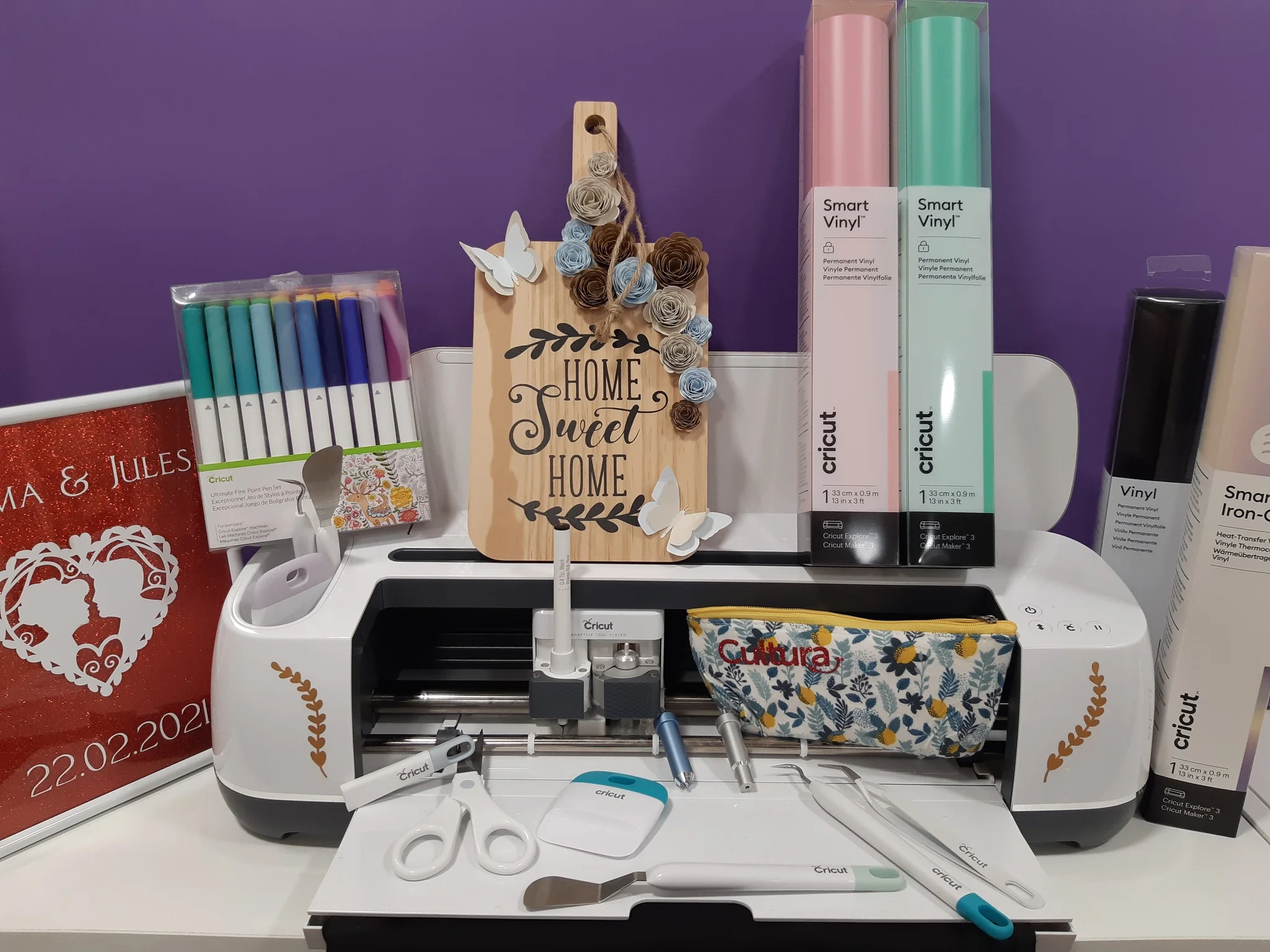
Question 2: What Cut Files Are You Going to Use?
When deciding on cut files to make money with your Cricut, you generally have three options:
Sign Up for Cricut Access:
Cricut Access is an excellent one-stop shop for creating projects to sell, offering over 100,000 images and hundreds of fonts. You could easily create products using only Cricut Access content and never run out of ideas. Cricut’s Angel Policy allows users to sell finished products made with many of their cut files, though licensed images like Disney, Star Wars, and Hello Kitty are excluded. Be sure to review the Angel Policy carefully, and it’s a good idea to have a lawyer go over it too.Create Your Own Cut Files:
Designing your own files is a fun and rewarding way to add a unique touch to your products. I’ve started doing this more recently, using my iPad, Procreate, and an Apple Pencil to draw custom images and convert them into SVG files. Cricut Design Space allows you to upload various file types like jpg, png, svg, bmp, gif, and dxf. Popular design programs for creating custom files include Procreate, Illustrator, Inkscape, Canva, and PicMonkey.Buy Cut Files from Design Websites and Designers:
You can also purchase incredible designs from websites or independent designers. When buying cut files, make sure the license is for commercial use (not just personal use), and carefully review the terms of the commercial use license. I recommend organizing your cut files into separate folders on your computer for commercial and personal use to avoid confusion. Additionally, pay attention to font licenses, as many free fonts are for personal use only, though you can often purchase a commercial license for an additional fee.

Question 3: How Are You Going to Price Your Items?
Pricing handmade goods can be tricky, and often, newcomers make the mistake of underpricing their products. This can frustrate seasoned sellers, as it makes it harder for them to sell their items at a fair price.
While it might be tempting to price your items low to encourage sales, I strongly recommend pricing your products fairly from the start. It’s easier to lower prices if necessary than to raise them once customers are used to paying less. Keep deep discounts for close friends and family members.
Here are a few methods to help you price your products:
1. Cost of Supplies + Hourly Wage = Selling Price
Make sure you’re paying yourself at least minimum wage for your time. This method ensures your supplies and labor are fairly compensated. It’s my favorite approach because it’s balanced and fair.
2. Cost of Supplies x 3 = Selling Price
Some sellers use this formula, but it doesn’t always reflect the time and effort put into a product, so I’m not as much of a fan of this one.
3. Market Research
Look at competitors on Etsy, visit local craft fairs, or check handmade Facebook groups to see how others are pricing similar products. Adjust your prices accordingly.
4. Ask Friends for Honest Feedback
Sometimes, it helps to get a fresh perspective. Ask friends to be brutally honest about how much they’d pay for your products. This is especially useful if you’re selling at craft fairs or to a general audience.
By pricing fairly from the start, you can ensure your business is sustainable while giving customers the value they deserve.

Question 4: Where Are You Going to Sell?
There are many exciting options for selling your Cricut creations! Here are some popular platforms, along with their pros and cons:
1. Set Up Your Own Online Store (Blog or Website)
– Pros: You own the site, so any marketing directly benefits you. You have full control over branding and sales.
– Cons: You’re responsible for setting it up or hiring someone to do it, and all marketing efforts rest solely on you. It’s harder for people to discover your store organically.
2. Facebook Business Page or Group
– Pros: Facebook is a widely used platform with tons of daily traffic. It’s also inexpensive to advertise and can help reach your target customers.
– Cons: Building a following takes time, and you don’t own the audience. Facebook limits organic reach for business pages unless you pay for ads.
3. Sell in Established Handmade Facebook Groups
– Pros: These groups already have built-in audiences, especially local ones. Selling to local buyers allows for easy pick-up, and it can be a great way to meet repeat customers.
– Cons: Competition can be tough, and pricing wars may arise, as some sellers offer their items very cheaply.
4. Etsy
– Pros: Etsy is the most popular platform for handmade goods, with global traffic and excellent marketing. Shoppers trust Etsy, and it’s often their first stop for handmade products.
– Cons: There’s a lot of competition, so you’ll still need to invest in marketing. Etsy charges listing and commission fees, and you’ll have to factor in shipping and handling costs.
5. Craft Fairs
– Pros: Craft fairs offer a great opportunity to meet customers in person. The organizer handles the marketing, and you can promote your attendance too.
– Cons: You have to pre-make stock without knowing what will sell, which can result in unsold items. Craft fairs also require a lot of preparation, and the payout isn’t always guaranteed.
6. Local Businesses
– Pros: Selling through local shops introduces your products to a new audience. You can offer custom lines and build relationships with shop owners.
– Cons: Profits are shared with the businesses, and like craft fairs, you’ll need to pre-make items and hope they sell.
Each platform offers unique benefits, so you can choose the one that fits your goals and business strategy.
Question 5: What Are You Going to Sell?
This is where the fun truly begins! If you own a Cricut and have explored this site or Pinterest, you know that the possibilities are endless.
The key is to figure out what you’re good at and, most importantly, what you enjoy making. If you dread weeding vinyl, for example, then creating intricate mandala shirts might not be the best fit for you, even if there’s an audience for them.
I also recommend putting your own unique spin on whatever you sell. This will help you stand out in a crowded market.
Here are 10 of my favorite ideas for items you can create and sell using your Cricut:
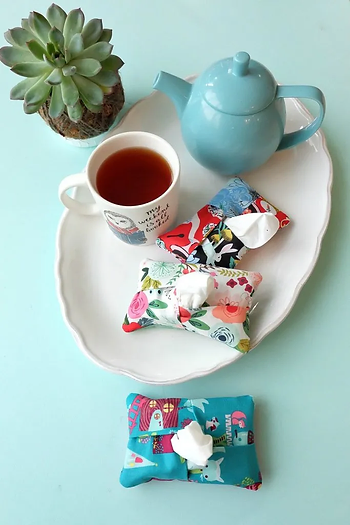
#1- Accessories for Your Purse
Fabric cutting with the Cricut Rotary Blade is one of my favorite things about my Cricut Maker! These little kleenex holders only take 5 minutes to make and uses fabric scraps! With such low supply fees and time investment their is the potential to get a huge return on your investment when pricing these. Buy fat quarters or “layer cakes” to get a bunch of different fabric options without the investment of buying fabric by the yard. You can even heat transfer the the recipient’s name to the bottom of the kleenex holder using iron-on for a way to customize the product!

#2- Glitter Tumblers
Glitter tumblers are one of the hottest trends right now, and the Cricut is the best vinyl cutting machine on the market for making them! My friend Heidi from "Happiness is Homemade" created an amazing step-by-step tutorial for making these stunning tumblers. With custom designs and the option for personalization, you can easily create these popular glitter tumblers to order and watch the orders start pouring in!
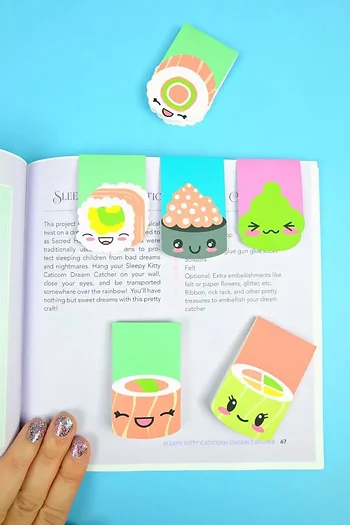
#3- Paper Crafts
These magnetic bookmarks were a hot seller at our recent craft fair! We designed a variety of cute bookmark styles, packaged them on a cardboard backer with our product name (cut using our Cricut), and placed them in small bags—perfect for stocking stuffers. Shoppers at the fair loved them, and they were so simple to make that even our kids helped with the production!
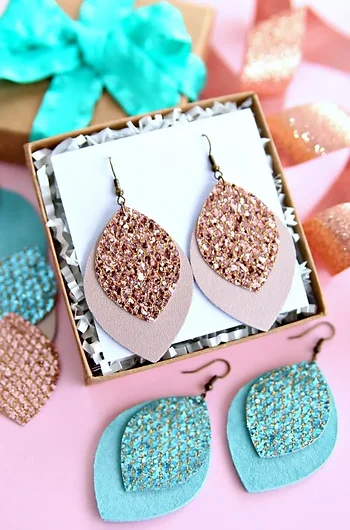
#4- Earrings
Jewelry is often overlooked when it comes to Cricut projects, but it's incredibly easy to make and sell! These stunning glitter earrings by my friend Kara from "Happy Go Lucky" are a great example. You can put your own unique spin on them by designing custom shapes, sourcing leather or faux leather in various textures and colors, and even applying iron-on vinyl to add extra flair!
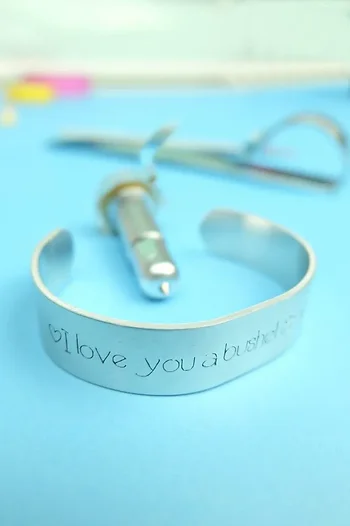
#5- Engraved Bracelets
Did you know your Cricut Maker can engrave? It’s true—all you need is an engraving tip! One of my favorite handmade items to sell are engraved bracelets. If you're participating in a craft fair, bring your Cricut Maker along and offer custom engraved bracelets made to order. It’s a great way to attract customers and boost sales!
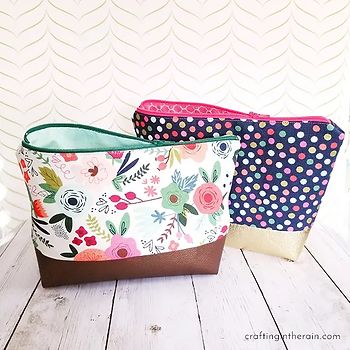
#6- Zippered Bags
Cosmetic bags, like the ones my friend Steph from Crafting in the Rain made, are a fantastic handmade item to sell. These versatile bags are perfect for selling in local shops, boutiques, and at craft fairs. They're a popular, practical item that customers love!
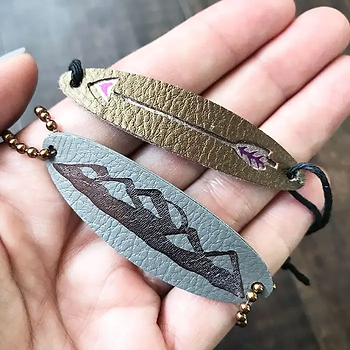
#7- Jewelry with Iron-On
Cosmetic bags, like the ones my friend Steph from Crafting in the Rain made, are a fantastic handmade item to sell. These versatile bags are perfect for selling in local shops, boutiques, and at craft fairs. They're a popular, practical item that customers love!
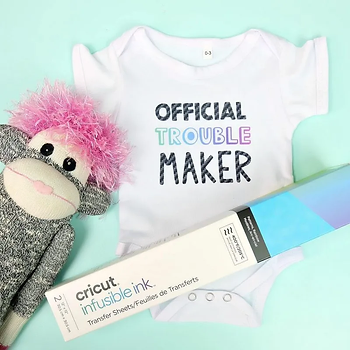
#8- Kids Clothes
Long before I started my blog, I sold shirts and onesies for kids, and it was so much fun creating cute designs that both parents and little ones loved! This particular onesie was made using Cricut Infusible Ink, which means the ink is infused directly into the fabric. The design will never peel, even after washing, making it a durable and beautiful handmade item for your customers!
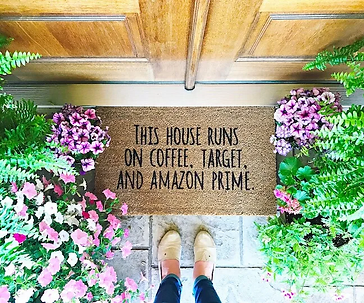
#9- Door Mats
This DIY door mat project has been on my crafting bucket list forever! Kayla creates the cutest door mats using her Cricut to make stencils, and she offers a step-by-step guide to help you get started. Once you’ve mastered the process, you can design your own custom mats, and soon your whole neighborhood will be ordering them for their front doors!

#10- Wood Signs
Making wood signs with your Cricut is so much fun, and the possibilities are endless! You can use Cricut Stencil Vinyl and paint, apply iron-on, use regular vinyl, or follow what Everyday Jenny did by using the Cricut Maker, Knife Blade, and Basswood for a more intricate design.
I hope these ideas have inspired you and helped spark your own unique ideas for making money with your Cricut! What I love most about my Cricut cutting machines is how they bring my creative visions to life. So, start dreaming, start creating, and start turning your passion into profit with your Cricut! If you have any questions or need advice, feel free to shoot me a message—I’m always happy to talk about Cricut!

[…] few months ago, I wrote How to Make Money With Your Cricut, where I answered readers’ questions about earning an income using their Cricut cutting machine. […]